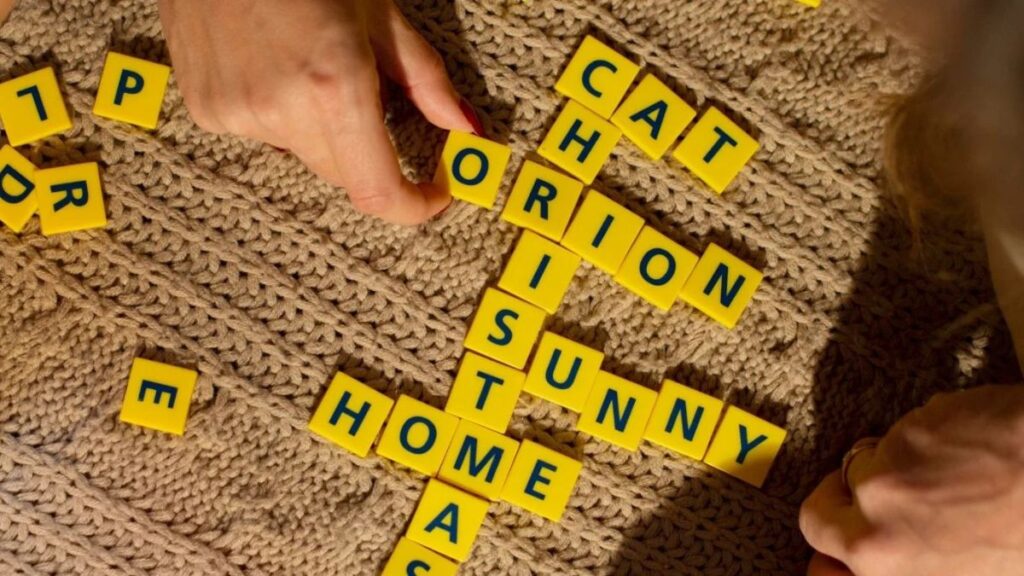Crossword puzzles have a special place in the hearts of many, and the New York Times (NYT) crossword is often considered the gold standard. Among its various themes and clues lies an intriguing category: home monitors. For avid solvers, this section presents both challenges and delightful surprises. If you’re looking to sharpen your skills or simply want to delve deeper into what makes these puzzles tick, you’re in for a treat! Join us as we unravel the mysteries behind solving the Home Monitors NYT Crossword, explore its history, and uncover tips that can elevate your game. Whether you’re new to crosswords or a seasoned pro, there’s something here for everyone who loves this classic pastime.
The History of Crossword Puzzles
Crossword puzzles have captivated minds since their inception in the early 20th century. The first known puzzle was published in a New York newspaper on December 21, 1913. Created by Arthur Wynne, it featured a diamond-shaped grid and simple clues.
As interest soared, newspapers across the United States adopted this engaging pastime. In 1924, the New York Times introduced its own version. It quickly became a staple for readers seeking intellectual stimulation.
The design evolved over time from basic grids to complex structures with themed puzzles that challenge even seasoned solvers. Crossword competitions began emerging as enthusiasts sought recognition for their skills.
By the late 20th century, crossword puzzles had transcended print media to become an integral part of digital culture. Today’s online platforms allow fans worldwide to connect over shared solutions and strategies for tackling these intriguing word challenges.
Understanding the Clues and Hints in the Puzzle
Understanding the clues in the Home Monitors NYT Crossword is an art form. Each clue acts as a breadcrumb leading you toward the answer. Some are straightforward, while others require lateral thinking.
Pay attention to wordplay and puns. Clues may have double meanings or unexpected twists. For example, “leafy home” might refer to a tree rather than just greenery.
Look for patterns in phrasing too. The same words can mean different things depending on context. A clue like “bakers do this” likely points to “rise,” not “make”.
Consider crossing answers as well; they often provide essential hints about vertical solutions. If you’re stuck, filling in intersecting words can unlock new possibilities.
Embrace ambiguity! Sometimes, the joy lies in exploring multiple interpretations before landing on that satisfying solution.
Tips and Tricks for Solving the Home Monitors Puzzle
Start by scanning the entire puzzle first. Look for easy clues that catch your eye. Filling in a few answers can provide a solid foundation to build upon.
Next, focus on the theme of the puzzle. Many home monitors puzzles revolve around specific topics or trends. Identifying these themes often reveals interconnected words.
Consider working with pencil and eraser rather than pen at first. This allows you to change answers as new insights emerge.
Use online resources wisely but sparingly. While they can offer hints, relying too much might hinder your own problem-solving skills.
Don’t rush! Take breaks when you feel stuck; fresh eyes can lead to breakthrough moments.
Sometimes, stepping back helps clarify tricky clues that seemed impossible before. Embrace the journey—every solved clue adds to your crossword expertise!
Common Themes and Answers in the Puzzle
Crossword puzzles often bring to light intriguing themes that enhance the solving experience. The Home Monitors NYT Crossword is no exception, featuring motifs that resonate with everyday life.
You might encounter clues related to technology and gadgets. These pop culture references keep the puzzle relevant and engaging for modern solvers.
Another common theme involves household items or activities. Expect questions about cooking tools or cleaning supplies, reflecting our daily routines.
Cultural references are also prevalent in these puzzles. Look out for famous quotes, movies, or even popular songs referenced through cleverly crafted clues.
Solving these thematic elements can elevate your enjoyment while honing your problem-solving skills. Each completed clue not only reveals hidden meanings but also enriches your knowledge of various topics along the way.
Benefits of Solving Crossword Puzzles for Brain Health
Crossword puzzles are not just a fun pastime; they offer numerous benefits for brain health. Engaging with these word games stimulates cognitive functions, enhancing memory and problem-solving skills.
Regularly tackling crosswords can improve vocabulary and language comprehension. As you decipher clues, your brain makes connections that boost verbal agility.
Research indicates that consistent puzzle-solving may slow cognitive decline in older adults. It keeps the mind active and encourages neuroplasticity—the brain’s ability to adapt and reorganize itself.
These puzzles also foster stress relief by providing a focused distraction from daily worries. This mental engagement promotes relaxation, improving overall mood.
Completing a crossword brings a sense of accomplishment. Each success reinforces positive feelings and motivates continued learning—a win-win for both mental well-being and enjoyment!
Conclusion: The Joy of Solving the Home Monitors NYT Crossword
The Home Monitors NYT Crossword is more than just a puzzle; it’s an experience. Each clue invites you into a world of words, challenging your mind and sparking curiosity. As you unravel the hints, you’re not just filling in squares but engaging with language in a dynamic way.
Solving this crossword can become a delightful ritual. Whether you’re sipping coffee on Sunday morning or taking a break during the week, there’s something satisfying about piecing together answers. The thrill of finally cracking that tough clue brings joy that few other activities can replicate.
Moreover, this puzzle offers connections to various aspects of life—pop culture references, historical facts, and even everyday objects like home monitors themselves all weave into its fabric. With each completed grid comes not only satisfaction but also the chance to expand your vocabulary and knowledge base.
Diving into the Home Monitors NYT Crossword opens up pathways for creativity and critical thinking. The time spent deciphering clues becomes an enjoyable venture rather than mere entertainment. It fosters community too; discussing solutions with friends or family adds layers to the experience.
So next time you find yourself staring at those blank squares filled with potential answers, embrace it as an opportunity—a moment where learning meets enjoyment in perfect harmony. Solving this crossword isn’t just about getting it right; it’s about savoring every letter along the way.






